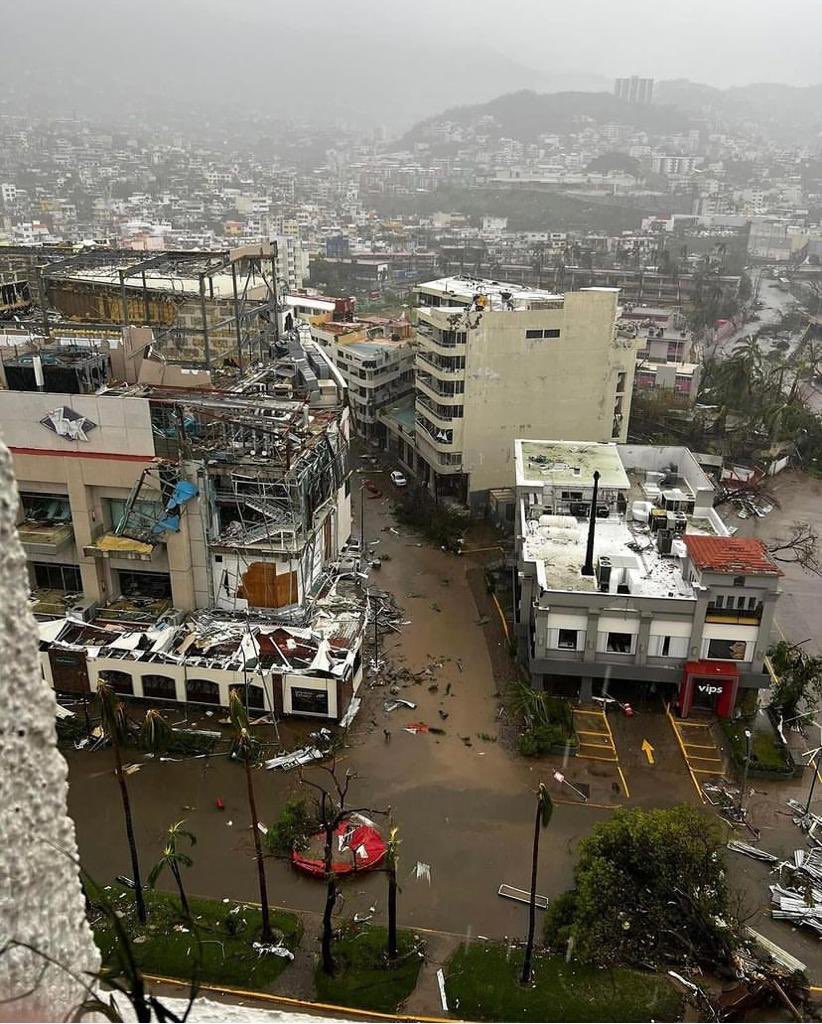chaddyboi66
E V I S C E M O G G E R
- Joined
- May 3, 2020
- Posts
- 9,974
- Reputation
- 13,211
Why Jova?
Follow along with the video below to see how to install our site as a web app on your home screen.

Note: this_feature_currently_requires_accessing_site_using_safari
Why Jova?
Anything else? Like deaths, damages, path and the actual hurricane?
Sure, I could list all that but why bother?Anything else? Like deaths, damages, path and the actual hurricane?
Besides I've already done that before on previous threads of yours similar to this one.Sure, I could list all that but why bother?
Pretty face + big tits + beautiful tropical scenic background = easy win in my book.
but what about this?Sure, I could list all that but why bother?
Pretty face + big tits + beautiful tropical scenic background = easy win in my book.

Yep, I remember what you did for Idalia and FranklinBesides I've already done that before on previous threads of yours similar to this one.
Yeah, Otis is very recent. That hurricane just went ER in Acapulco without any warning.Though it was between Jova and Lee if I recall correctly, as "Otis" wasn't even brought up in the other ones yet.
No, not really.@chaddyboi66 heard of Otis on the news?
Otis was on Western news everywhereNo, not really.
I also don't live there though.
Bcz I’m not gay ?@Biggdink why Jova
@Niklaus Mikaelson
All equal tbh
Gotta rank themAll equal tbh
I’m inclusive
Because k-pop halo.@TRUE_CEL why Lee?
@Biggdink
What about the other two?Because k-pop halo.

0You've seen these previous battles, where Franklin and Lee won respectively:

LEE VS JOVA VS IDALIA VS FRANKLIN
You've seen the Lee vs Jova mog battle, in which Lee obliterated Jova: I think we're missing two more hurricane friends to see if Lee REALLY mogs. Let's bring back Franklin and Idalia. STATS, PATH AND IMAGES (as of September 13th, 2023) Lee Jova Franklin Idalia Dates active September...looksmax.org

FINAL MOG BATTLE: LEE VS JOVA
YOU'VE SEEN MY BAJILLION THREADS ON LEE AND JOVA. THEY ARE THE STRONGEST HURRICANES OF THE ATLANTIC AND PACIFIC HURRICANE SEASONS, RESPECTIVELY (AS OF FRIDAY, SEPTEMBER 8TH, 2023). STATS, PATH AND IMAGES (as of September 8th, 2023) Lee Jova Dates active September 5th, 2023 - present...looksmax.org
but it's time to have a rematch, since Otis exploded into a C5, beating Jova into a pulp like the misogynistic inkwell he is, and now has become the strongest landfilling hurricane on record in the Eastern Pacific basin, as well as the strongest hurricane of the 2023 Pacific hurricane season.

MISOGYNIST INCEL OTIS BEATS UP JOVA, GOES ER ON CARTELCELS IN ACAPULCO
https://en.m.wikipedia.org/wiki/Hurricane_Otis https://www.bbc.com/news/world-latin-america-67213103 Before Afterlooksmax.org
Let's bring out the contenders!
STATS, PATH AND IMAGES (as of October 25th, 2023)
Lee Jova Otis Gender Male Female Male Ethnicity Asian Latina White Dates active September 5th, 2023 - September 19th, 2023 September 4th, 2023 - September 12th, 2023 October 22nd, 2023 - present Storm category at peak intensity Category 5 hurricane Category 5 hurricane Category 5 hurricane Peak intensity mph (km/h) 165 mph (270 km/h) 160 mph (260 km/h) 165 mph (270 km/h) Minimum pressure (mbar) 926 mbar 929 mbar 923 mbar Net worth (2023 USD) Unknown "Minimal" Unknown, but probably high Body count 3 0 (Virgin) Unknown, but probably high Estimated ACE 36.8 16.2 6.4 Path taken View attachment 2510801 View attachment 2510802 View attachment 2510799 Images View attachment 2510800 View attachment 2510803 View attachment 2510798 Humanoid version View attachment 2510806 View attachment 2510807 View attachment 2510808
@JovaYou've seen these previous battles, where Franklin and Lee won respectively:

LEE VS JOVA VS IDALIA VS FRANKLIN
You've seen the Lee vs Jova mog battle, in which Lee obliterated Jova: I think we're missing two more hurricane friends to see if Lee REALLY mogs. Let's bring back Franklin and Idalia. STATS, PATH AND IMAGES (as of September 13th, 2023) Lee Jova Franklin Idalia Dates active September...looksmax.org

FINAL MOG BATTLE: LEE VS JOVA
YOU'VE SEEN MY BAJILLION THREADS ON LEE AND JOVA. THEY ARE THE STRONGEST HURRICANES OF THE ATLANTIC AND PACIFIC HURRICANE SEASONS, RESPECTIVELY (AS OF FRIDAY, SEPTEMBER 8TH, 2023). STATS, PATH AND IMAGES (as of September 8th, 2023) Lee Jova Dates active September 5th, 2023 - present...looksmax.org
but it's time to have a rematch, since Otis exploded into a C5, beating Jova into a pulp like the misogynistic inkwell he is, and now has become the strongest landfilling hurricane on record in the Eastern Pacific basin, as well as the strongest hurricane of the 2023 Pacific hurricane season.

MISOGYNIST INCEL OTIS BEATS UP JOVA, GOES ER ON CARTELCELS IN ACAPULCO
https://en.m.wikipedia.org/wiki/Hurricane_Otis https://www.bbc.com/news/world-latin-america-67213103 Before Afterlooksmax.org
Let's bring out the contenders!
STATS, PATH AND IMAGES (as of October 25th, 2023)
Lee Jova Otis Gender Male Female Male Ethnicity Asian Latina White Dates active September 5th, 2023 - September 19th, 2023 September 4th, 2023 - September 12th, 2023 October 22nd, 2023 - present Storm category at peak intensity Category 5 hurricane Category 5 hurricane Category 5 hurricane Peak intensity mph (km/h) 165 mph (270 km/h) 160 mph (260 km/h) 165 mph (270 km/h) Minimum pressure (mbar) 926 mbar 929 mbar 923 mbar Net worth (2023 USD) Unknown "Minimal" Unknown, but probably high Body count 3 0 (Virgin) Unknown, but probably high Estimated ACE 36.8 16.2 6.4 Path taken View attachment 2510801 View attachment 2510802 View attachment 2510799 Images View attachment 2510800 View attachment 2510803 View attachment 2510798 Humanoid version View attachment 2510806 View attachment 2510807 View attachment 2510808